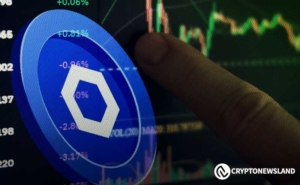Is Tether’s USDT stablecoin ‘noncompliant’ with EU’s MiCA regulations?
Coinbase is preparing to delist noncompliant stablecoins in Europe by the end of 2024, but there is still no clarity regarding the status of Tether’s USDt, the world’s largest stablecoin.
Coinbase told its European customers on Oct. 4 that it would restrict services for stablecoins that “do not meet requirements” of the European Union’s Markets in Crypto-Assets Regulation (MiCA).
Coinbase will offer stablecoin options, including USD Coin ( USDC ), which it jointly issued with United States crypto firm Circle in 2018. The USDC stablecoin became one of the first stablecoins to comply with MiCA in July.
Coinbase’s message to users in the European Economic Area about upcoming stablecoin restrictions on Dec. 30, 2024. Source: NomadicPaura
While Coinbase has not formally announced if the upcoming restrictions will affect USDt ( USDT ), some reports and community discussions suggest that Tether could face challenges under the new regulations. However, as of early October, USDT’s regulatory status in Europe remains uncertain.
Europe’s ESMA declines to reveal whether Tether USDT is “noncompliant”
The European Securities and Markets Authority (ESMA), one of the key supervisors of MiCA compliance, has yet to comment on USDT’s status.
When asked about Tether’s regulatory position under MiCA, an ESMA spokesperson declined to provide details, stating that discussions are ongoing with market participants and other stakeholders.
Referring to MiCA’s third title, “Asset-referenced tokens,” and the fourth title, “Electronic money tokens,” the representative stated:
“We are aware that the entry of application of titles III and IV of MiCA have raised some questions amongst market participants and specially in relation to the impact of unlicensed stablecoins' issuers on the activities of crypto asset service providers.”
The ESMA spokesperson said the authority continues to actively discuss with its members and other relevant parties how to best address those issues.
MiCA’s nine titles structure. Source: CMS.law
Titles III and IV are two of MiCA’s total nine titles that introduce requirements such as the mandatory holding of 2% of the newly created “reserve assets,” publishing a white paper, timely asset disclosures and authorization by regulatory authorities, among others.
MiCA aspects could raise risks to banks and stablecoins, says Tether CEO
While Tether has commended EU regulators for their efforts in establishing a structured framework for stablecoins, the company believes there are risks related to certain MiCA aspects.
“Some aspects of MiCA make the operation of EU-licensed stablecoins more complex and potentially introduce new risks to both local banking infrastructure and stablecoins themselves,” Tether CEO Paolo Ardoino told Cointelegraph on Oct. 9.
To address those challenges and support users in Europe, Tether has been working on a technology-based solution tailored for the European market, Ardoino said. Tether plans to unveil the tool “in due course,” he added.
Which parts of MiCA is Tether concerned with?
According to Juan Ignacio Ibañez, member of the Technical Committee of the MiCA Crypto Alliance, Tether is mostly unhappy with MiCA’s reserve management requirements.
Related: MiCA threatens crypto firm exodus to Middle East: Regulatory expert
“They feel it disrupts their business model and investment strategy, but as a result of not wanting to comply with these regulations, it seems that they will also choose not to comply with any others too,” Ibañez suggested.
MiCA Crypto Alliance Techincal Committee’s Ibañez. Source: Authority Magazine
Should Tether decide to pursue MiCA compliance, the process would entail a strategic decision from Tether as such a move is about “relinquishing a degree of freedom on how they manage their reserves,” the DSF exec said, adding:
“It will be up to the Tether team to decide on whether they are happy to continue with the current course of action to maintain this freedom, or whether they will budge and acquiesce to European regulators’ demands at the last minute in the face of the delisting prospects.”
Tether’s USDT, which celebrated its 10-year anniversary on Oct. 6, is the world’s largest stablecoin, with a market value of nearly $120 billion and more than 350 million users worldwide . Last week, Tether CEO Ardoino hinted that the company might prioritize developing markets like Argentina over developed economies in the EU.
Related: Harris’ unrealized gains tax could ‘tank markets’: Nansen’s Alex Svanevik, X Hall of Flame
Disclaimer: The content of this article solely reflects the author's opinion and does not represent the platform in any capacity. This article is not intended to serve as a reference for making investment decisions.
You may also like
Fantom’s Solid Pattern of Higher Lows: What’s Next for FTM Price?

LINK’s Nearly 5% Daily Jump Sparks Optimism- Will LINK Reach $20 Soon?

Sonic Soars Over 6%—Can a Successful Breakout Send It Toward $1?

Solana’s Path to $3,800—Will It Hold Above $130 This Weekend?

